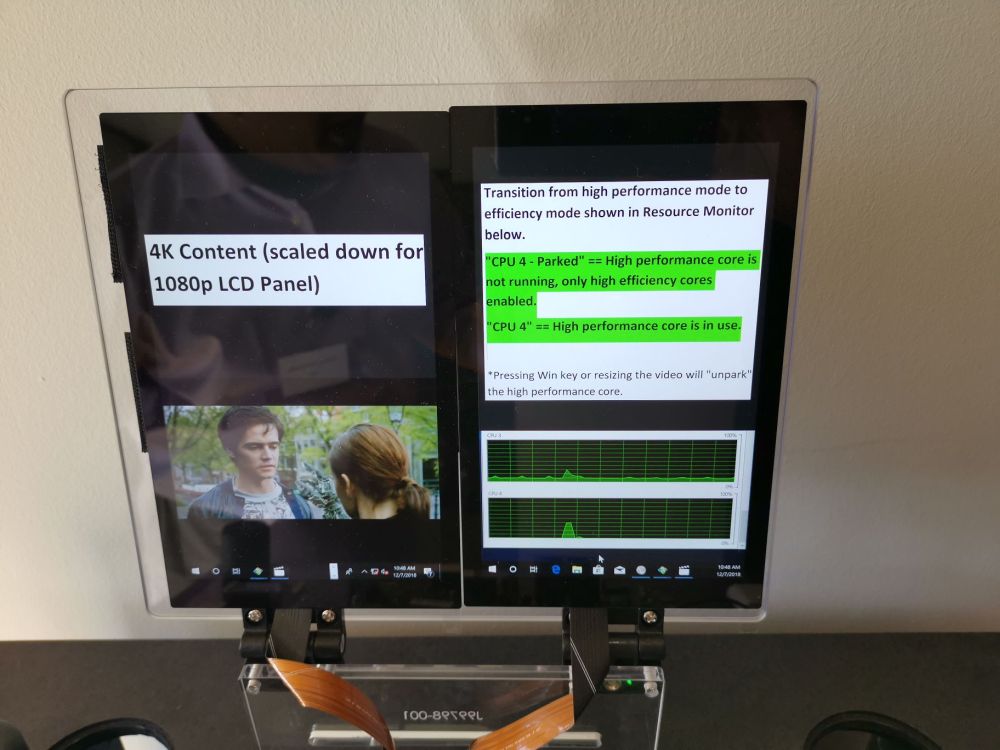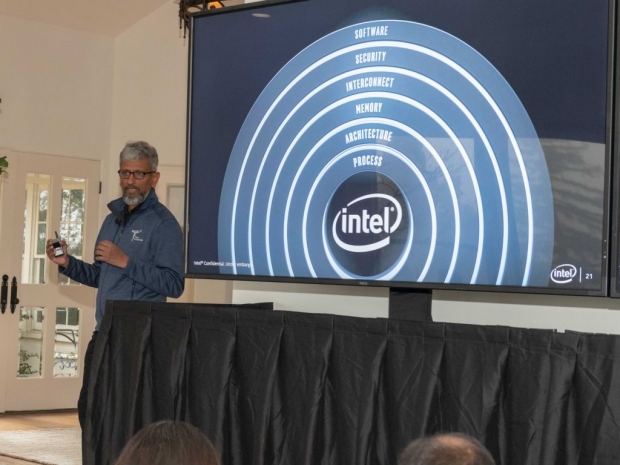The "new" Intel has decided to think out of the box, after years of making strictly Atom based low power processors or high-performance Core processors and never mixing them. Now they have an idea to make a processor featuring both low power and high performance in one place.
This is possible thanks to Intel's Foveros 3D packaging technology that allows stacking and interconnecting different dies on the same package. In this case, the cores sit on top of each other. Intel was able to demonstrate a custom design for an unnamed customer. This is Intel’s solution to a fanless design that might end up in a modern detachable or even a tablet.
The 10nm CPU cores with GPU, caches and any other accelerator sit on top of the 22nm that house I/O, SRAM and the power circuitry sit below.

10nm, Atom meets core at 2mW sleep
We had a chance to see the machine in action and in a rather simple demo. The machine can play 4K content on an 1080p LCD panel and use small power cores. 4K video these days can be played with very low power, but the demo demonstrated that the CPU can run windows on very low power and enable stand by as low as 2mW.
As soon as the user touches the keyboard, the windows expect that a higher performance will be needed, for example, to launch and use Photoshop and it will fire up the big cores. In a traditional laptop a typical LCD consumes 2W, an order of magnitude compared to the low power of the Foveros powered scalable chip. Another number that we thought we should mention is 7W, the magical number that is the highest TDP that can be usedwithout an active fan. Intel didn’t comment on any specifics about this, but we expect the chip to be ready in 2019 with the first products in late 2019, if not early 2020.

Foveros is the new enabler for Intel
Engineers told us that the caches between Core and Atom cores have been shared without telling us a lot of details about it. This is always a problem when you want to transfer workloads and they also confirmed that you should be able to power little and big cores at the same time. It wasn’t really clear whether you can mix and match and power some small cores as well as the big ones. With Foveros, Intel can mix and match and create custom solutions that can target various customers. It appears you can mix and match high-performance cores such as CPU/GPU or AI with low power logic, radio, high-density memory, sensor transceivers, power regulators, photonics, high-speed memory or FPGA. This is a rather complex story but it looks like a very promising technology.

Foveros comes from Greek and means awesome, formidable, dreadful, fearful, frightening, terrifying or horrifying.
In case Intel went for a controversial codename that can be interpreted in incredibly lot of ways, it sure found one.
We suspect that Apple and Microsoft want this for its next generation tablets, laptops, detachable, but the usual suspects like Acer, HP, Lenovo, and Dell are high possibilities too.
This is not the Sunny Cove 10nm that Intel introduced at the event and the one that will replace the now RIP Cannonlake 10nm. Intel promised more details about Sunny Cove at a later date.

